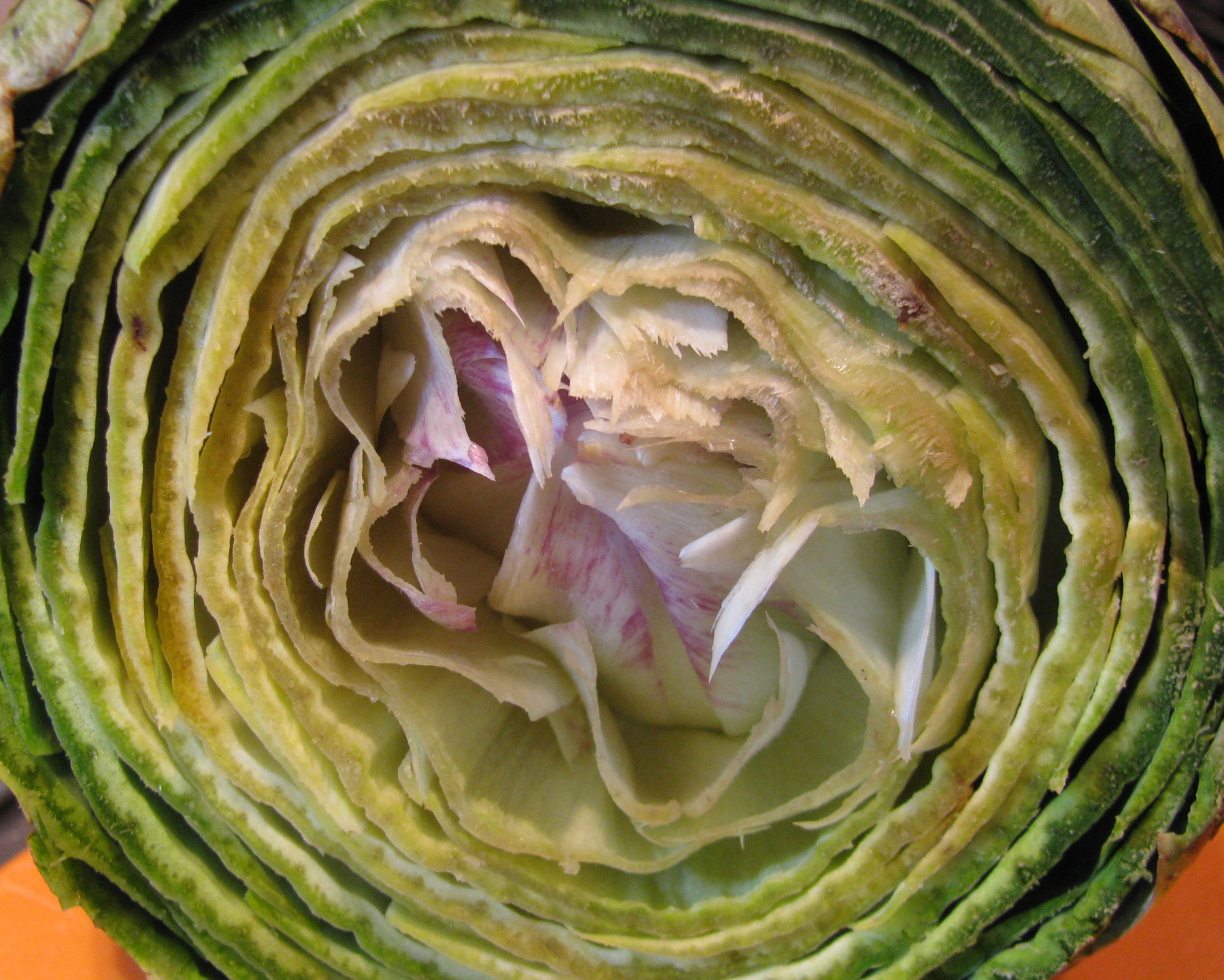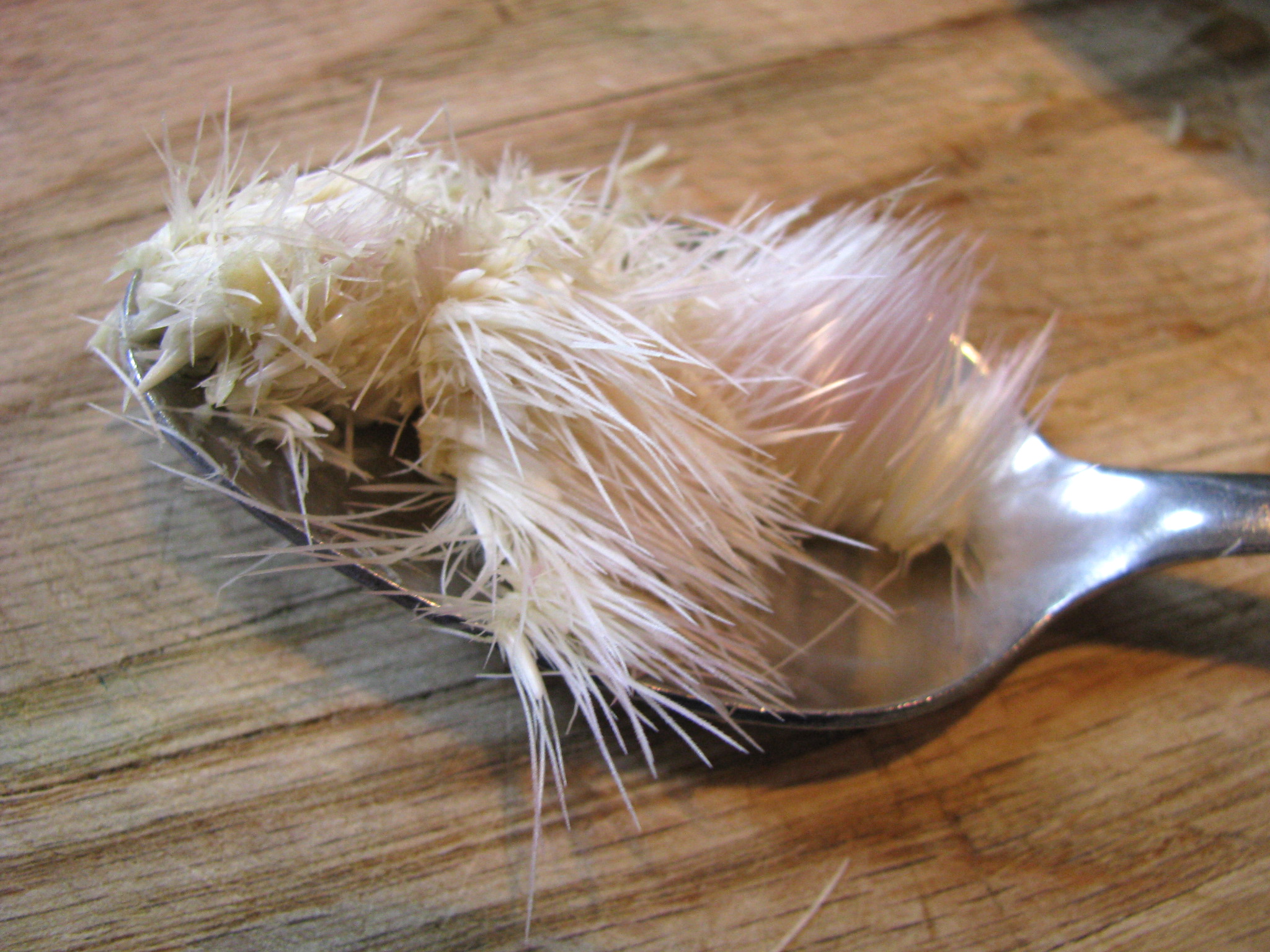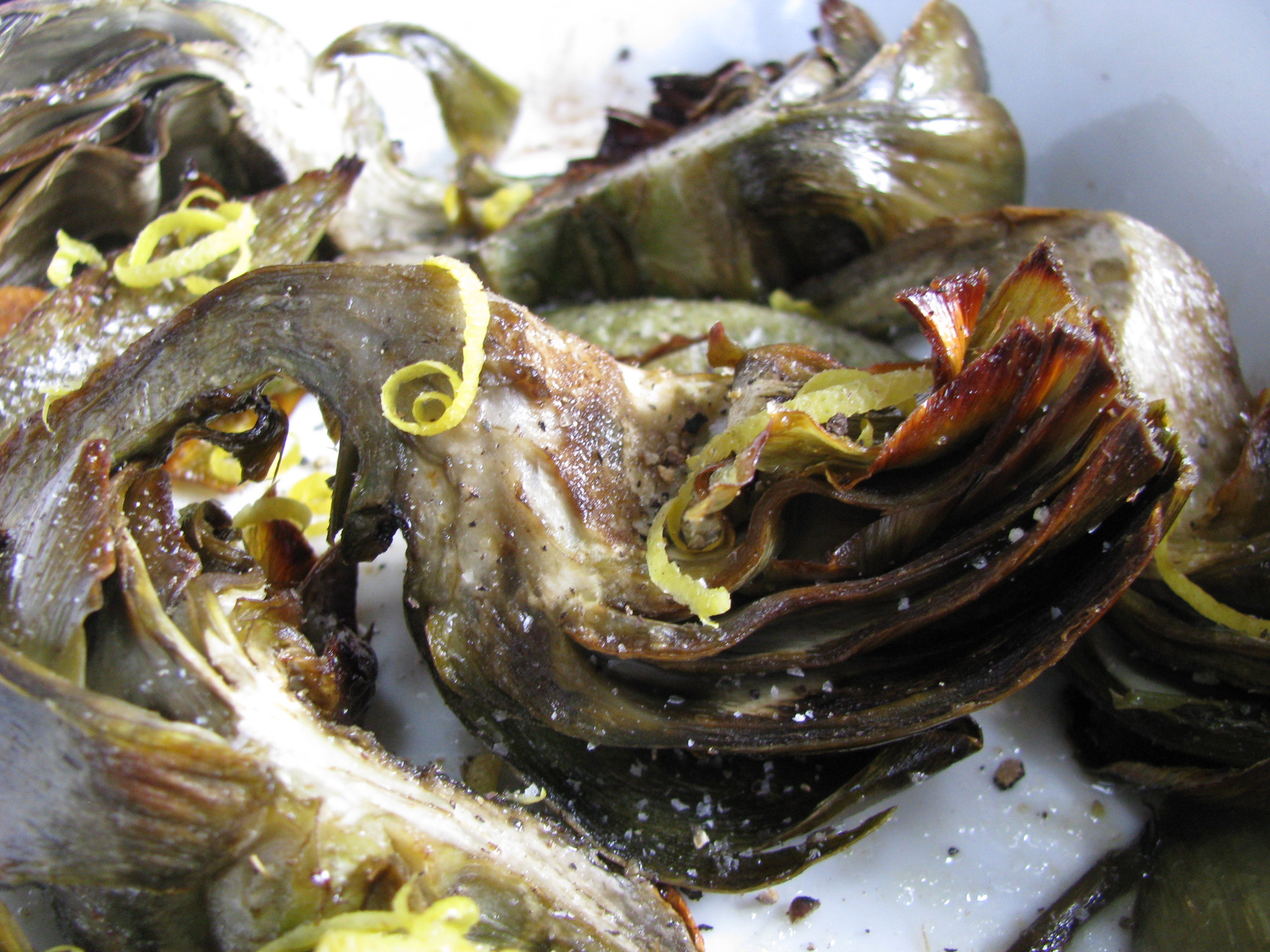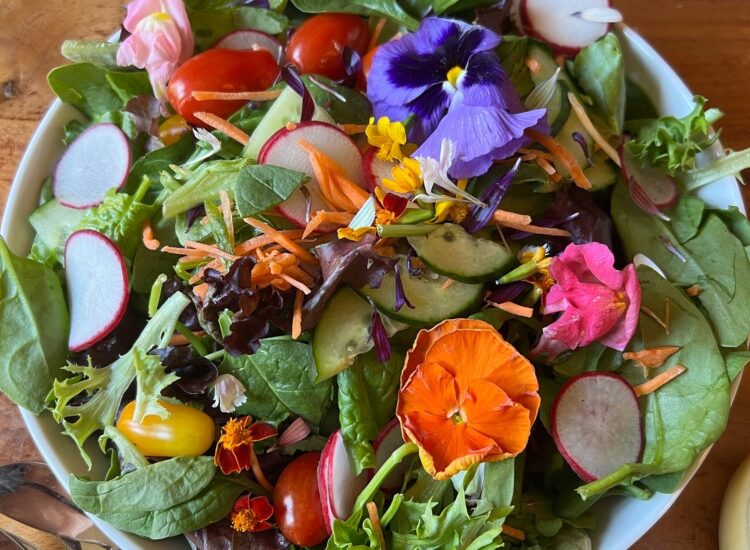Last week I saw a tweet from the Greener Grocer saying that they had ‘mama and baby artichokes’. I have a hard time resisting baby vegetables, but I have never cooked artichokes before, and have to admit that I was intimidated. A couple of days later Heidi Robb’s post on roasted artichokes appeared in my google reader. I was intrigued but found the instructions, in the abstract, confusing.
On Saturday morning I was tentatively eyeing up the artichokes at the Greener Grocer and I asked Colleen (Greener Grocer Manager, Slow Food Columbus Leader, Friend and Neighbor) if she would teach me how to cook artichokes. So it came to be, that we spent Sunday afternoon experimenting with artichoke recipes. I was surprised how few of my cookbooks included artichokes, but I found enough to start with. The main sources we used were: Peter Berley’s Flexitarian Table and James Peterson’s Vegetables.
Artichokes are the bud of a perennial thistle and and you can see the beginnings of the thistle flower inside. The spiky part at the bottom is the inedible choke. As James Peterson said, the first person to eat an artichoke must have been both inventive and brave. We had two of the huge ‘mama’ artichokes and nine of the babies to play with. We decided to boil one of the large ones to eat in the traditional way (following James Peterson’s advice); roast the other large one (following Heidi Robb’s recipe) and braise the baby ones (following Berley’s method).
To boil large globe artichokes you need a large non-aluminum pot. Slice the stem off at the base so that it will sit on a plate (you can peel, boil and eat the stem). Trim off any small leaves clinging around the bottom of the artichoke and any thorns. Put the artichokes in the pan with enough cold water to cover them completely and add a tablespoon of olive oil. Put a plate or a smaller pan lid on top of the artichokes to hold them down under the water, but do not cover the pan. If they are not fully submerged (of if you use an aluminum pan) they will discolor. Put the pan on a high heat until the water comes to a simmer, then turn it down and simmer for approximately 20 minutes, or until the artichokes are done. This depends a lot on the size. You can test them by inserting a paring knife into the base (It should slightly resist) or by pulling off a leaf and seeing if the flesh comes off easily. Peterson did not specify salting water, we felt that it should have been.
Drain them upside down in a colander, serve on a plate with a dipping sauce (butter, vinaigrette, hollandaise, aioli), some lemon and another plate to discard the leaves. We used some melted home-made butter as our dipping sauce.
To eat the artichoke you pull the leaves off one by one, dip them in your chosen sauce and scrape the flesh off with your teeth. We found this to be somewhat zen like and enjoyed chatting as we took turns plucking off the leaves. Once most the leaves have been plucked, the inner-most leaves are very flimsy and can be discarded. Underneath is the inedible choke ( the bristle-y part) which can to be scraped off with a spoon. This reveals the meaty heart which can be cut with a knife and fork.

The instructions for roasted artichokes are much easier to understand with an actual artichoke in front of you. For people who don’t like to waste food, discarding the top third of the artichoke off was hard, but we followed the instructions to the letter with good results. Having halved the artichoke and dispensed with the choke, each half is cut into four, tossed in olive oil and roasted with garlic.
The caramelization adds an interesting flavor dimension and you don’t need any sauce. You still end up scraping the flesh off with your teeth as the tops of the leaves are tough. We enjoyed this preparation but there was something more satisfying about the traditional method of gradually peeling the leaves off the globe them one by one.

Next were the baby artichokes, easier to eat and prepare because you don’t have to worry about the choke. These are immature buds that grow higher up on the same stalk as the ‘mamas’. To prepare them you trim the stalk (and peel it if it feels woody), cut the top third off the top of the artichoke and remove any tough outer leaves. We learned that we should have removed more than our instincts suggested. Artichokes oxidize amazingly quickly, so you need a cut lemon handy to rub them with as soon as they are cut.
The method was: heat some olive oil in a heavy skillet over a medium heat until hot, but not smoking. Add the artichokes, garlic cloves and sprigs of fresh thyme. Cook, stirring occasionally until golden brown, about 8-10 minutes. Add white wine, cover and simmer gently until the artichoke stems are tender, about 15 minutes. Discard the thyme sprigs and raise the heat. Boil uncovered for 2-3 minutes until the juices have thickened and plate. Season with salt and pepper.
I would adapt the braised artichoke recipe if I made it again, and instead of using white wine alone as the cooking liquid, I would use half wine / half stock or water, or I might try adding some tomatoes and onions. I like the flavor of wine in cooking, but in this instance the effect was too bitter.
Now that I have overcome my artichoke anxiety – what else should I try? I would love to experiment with some more artichoke recipes.











